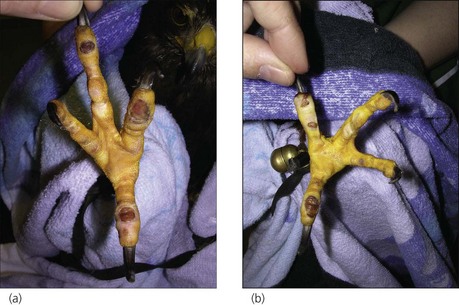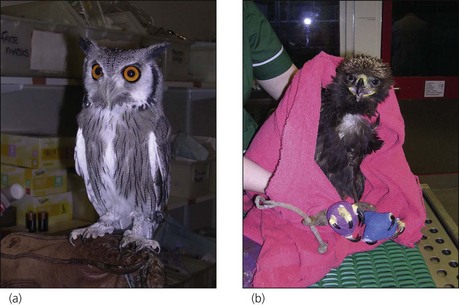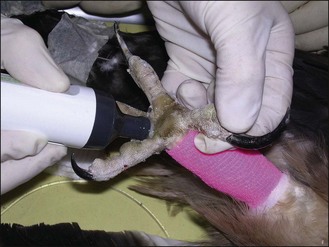11 Harris’ hawk with bumblefoot
Husbandry
The Harris’ hawk (Box 11.1) was bred in captivity in the UK, and had been in the current owner’s possession for 1 month. He was housed in a covered aviary with three perches, of artificial turf-covered wood. The pea gravel substrate was cleaned as necessary. The bird was not tethered, but did wear leather leg equipment (aylmeri and jesses, Fig. 9.4). The diet comprised various whole carcases, including day-old chicks, rabbit and quail. Water was provided in a wide shallow bath (changed regularly). The owner was an experienced falconer who owned and worked other raptors besides this Harris’ hawk.
BOX 11.1 Ecology of Harris’ hawks
Clinical Examination

Figure 11.1 Grade 2 bumblefoot lesions in the Harris’ hawk (Parabuteo unicinctus). (a) Right foot, (b) left foot.
CLINICAL TIPS
Physical examination of raptors
Other Possible Investigations
Radiography
It is advisable to radiograph the raptor’s feet to assess for bone involvement in the condition.
Ultrasound
In some cases it may be useful to use ultrasound to assess soft tissues underlying the skin or lesion. A stand-off will be required to optimize image quality. Doppler ultrasound probes can also be utilized to monitor blood supply to the digits if vascular compromise is suspected (Fig. 11.3).
Stay updated, free articles. Join our Telegram channel

Full access? Get Clinical Tree




